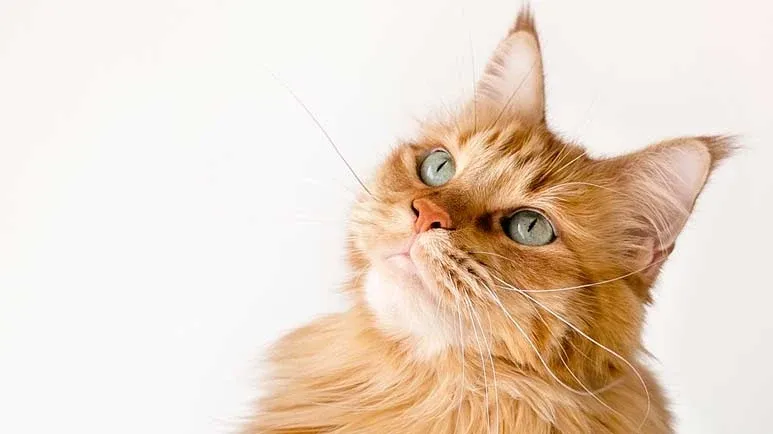Why the Friendliest Cats Happen To Be This Color
Is it a coincidence or could it be in their genes? These kitties appear to be extra-special and their owners were more likely to describe them as 'friendly' when surveyed. Indeed, researchers have found their coat color is associated with even more physical and behavioral differences.

STORY AT-A-GLANCE
- Orange (aka ginger) cats have distinct personalities that appear to be linked to their coat color
- Most orange cats are male, male cats often have different personalities than females, so it might explain the sociable behavior of many orange kitties
- There are other genetic differences that result in the dominance and boldness of orange cats, males in particular
- The bold and risk-taking nature of orange cats make them more likely to approach humans, reinforcing their reputation for being friendly
- The genetic link between coat color and behavior is seen in other animals as well, suggesting that inherited traits influence both personality and physical characteristics
Editor's Note: This article is a reprint. It was originally published November 17, 2020.
If you have an orange cat or have ever been around one, there’s a good chance you sense there’s something a little extra-special about them, which is not to say there isn’t something special about feline companions in general, regardless of coat color. Every kitty is special in their own way.
But orange cats (also called ginger cats) seem to stand out in terms of their personalities and behavior, and science is inching closer to an explanation for this widely held belief.
For example, according to the results of an online survey of cat owners published in 2015, respondents were more likely to describe orange cats as friendly.1 And while this finding could be attributed to confirmation bias on the part of fans of orange cats, there could also be a genetic component in play.
The gene responsible for feline coat colors is linked to gender, which in the case of orange cats results in many more males than females. It’s generally thought (though not well-researched) that male cats tend to be slightly more social than females. (This is a hotly debated topic with lots of strong opinions on all sides, but it’s covered in the literature, nonetheless.)
This could in part explain not only the sociability of orange cats, but also the noted feistiness (“tortitude”) of tortoiseshell cats, who are primarily female.2
Why Orange Cats Are Different from Other Cats
A study published in 1995 examined the “orange gene” in cats and found they differ from other cats in even more ways.3 The research spanned a 10-year period from 1982 to 1992 and involved 30 cat populations in France. Data was collected from 56 to 491 cats in each population.
According to Karen Wu Ph.D., writing for Psychology Today, the researchers uncovered a few interesting trends with regard to orange cats:4
- Orange cats are more common in rural areas, which are less populous than urban areas, suggesting that “orange cats may enjoy greater reproductive success in particular social conditions.”
- Orange cats are less common in areas with greater mortality risk, suggesting that “orange cats may be more likely to engage in risky behaviors that result in death.”
- Orange cats show greater sexual dimorphism (differences between genders), in that orange males weigh more than cats of other colors, and orange females weigh less than cats of other colors.5
“In rural environments,” explains Wu, “the mating system of cats is more polygynous, meaning that while male cats tend to mate with multiple female cats, females tend to mate with only one male. Meanwhile, in urban environments, both female and male cats have multiple mates.”
The authors of the study theorize that due to their physical and behavioral differences, orange cats — especially males — employ a different reproductive strategy than other cats.
“Specifically, since they are larger in size (and likely more aggressive given previously documented links between a male cat's body size and aggression towards other cats),6 orange male cats may enjoy greater social status and thus reproductive success in rural locations where females typically only mate with one male,” writes Wu.
“However, in urban environments, their social status may not get them as far. In these dense environments, female cats tend to mate with many male cats. As a result, reproductive success is dependent on sperm competition rather than physical competition between male cats.
Therefore, in an urban environment, the competitive nature of orange male cats may heighten their risk of death (e.g., through fights with cats or other animals), thus driving down the proportions of orange cats.
This idea is supported by past findings that larger male cats are more dominant and aggressive, resulting in both greater reproductive success and greater mortality risk.”7
Are Risk-Taking Cats Friendlier to Humans?
As strange as it may seem, the coat color-behavior connection in cats is also seen in other animals, including birds and rodents. It appears that genes that influence behavior and certain physical attributes are inherited together with genes responsible for coat color. And while the 1995 study authors don’t hypothesize about the reasons behind orange cat friendliness toward humans, it’s possibly the result of the risk-taking behaviors these cats exhibit.
“Perhaps orange male cats, due to their dominant status and bold personalities, feel more comfortable with approaching humans, who often frighten timid cats,” Wu writes. “Future studies can investigate whether this might be the case.”
Sources and References
- 1 Human Perceptions of Coat Color as an Indicator of Domestic Cat Personality, Anthrozoös, 25:4, 427-440
- 2 Journal of Applied Animal Welfare Science, Volume 19, Issue 1, 2016
- 3 Oikos Vol. 73, No. 3 (September 1995), Pages 299-308
- 4 Psychology Today, September 27, 2020
- 5 Australian Journal of Zoology 32(2) 231-237
- 6,7 Ethology, March 2007, Volume 113, Issue 3, Pages 283-289











